This morning, Lorna and I took our very first helicopter flight.
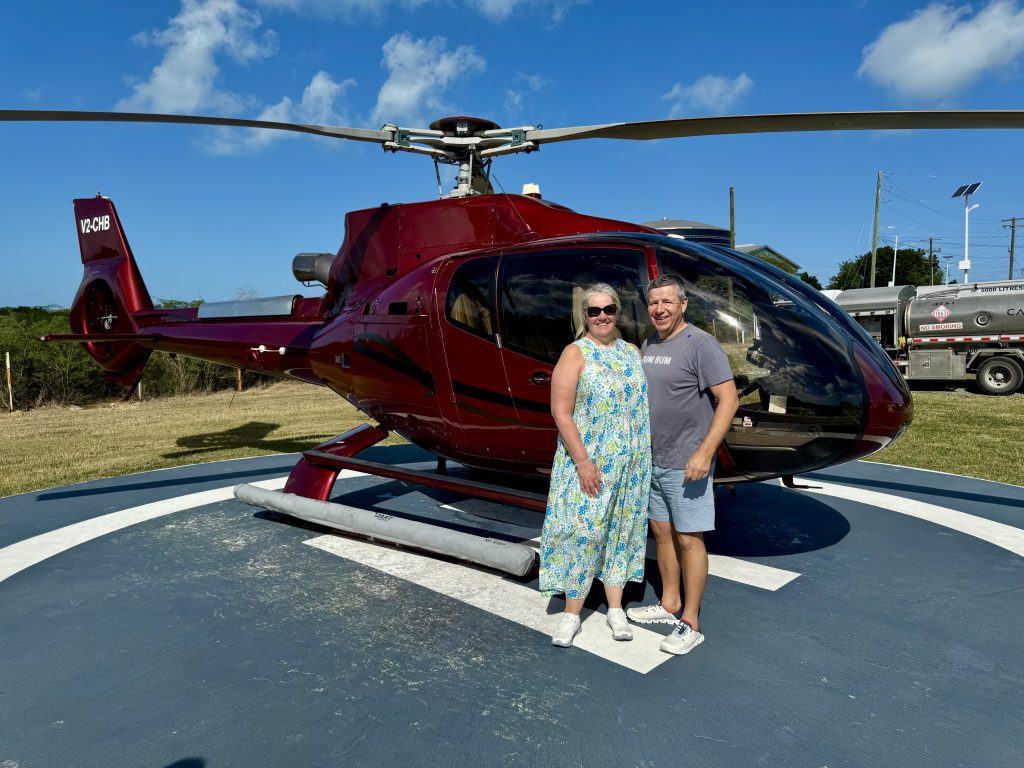
Our flight took us from Calvin Air landing pad, back out over the port of Saint John and then south-west to the island of Montserrat. Nervous at the outset, it didn’t help when our Pilot, Raymond’s opening words over his radio to air traffic control were: “3 souls on board.” In fact, the flight was a smooth experience and made what had already been an amazing weekend, a spectacular one.
The overhead view of our ship, Arvia, was most impressive.

Montserrat is a British Overseas Territory in the Caribbean Sea about 10 miles long and 7 miles wide, with 25 miles of coastline. It took us fifteen minutes to fly the 33 miles from Antigua to Montserrat.
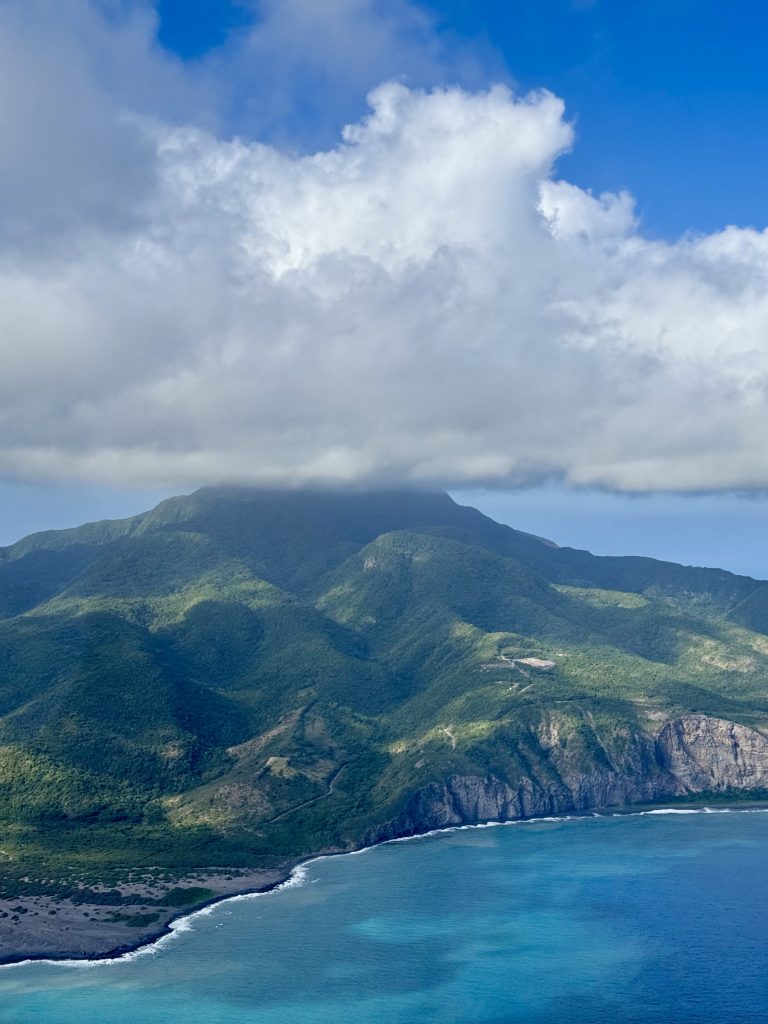
It is nicknamed the “Emerald Isle” both for its resemblance to coastal Ireland and for the Irish ancestry of many of its inhabitants. The island is made up of three different volcanic mountains but only one is currently active.
In 1995, the previously dormant Soufrière Hills volcano at the southern end of the island became active and its eruptions destroyed Plymouth, the Georgian era capital city situated on the west coast. Between 1995 and 2000, most of the population was forced to flee, many to the UK, leaving fewer than 1,200 of the nearly 11,000 people on island before the eruption.
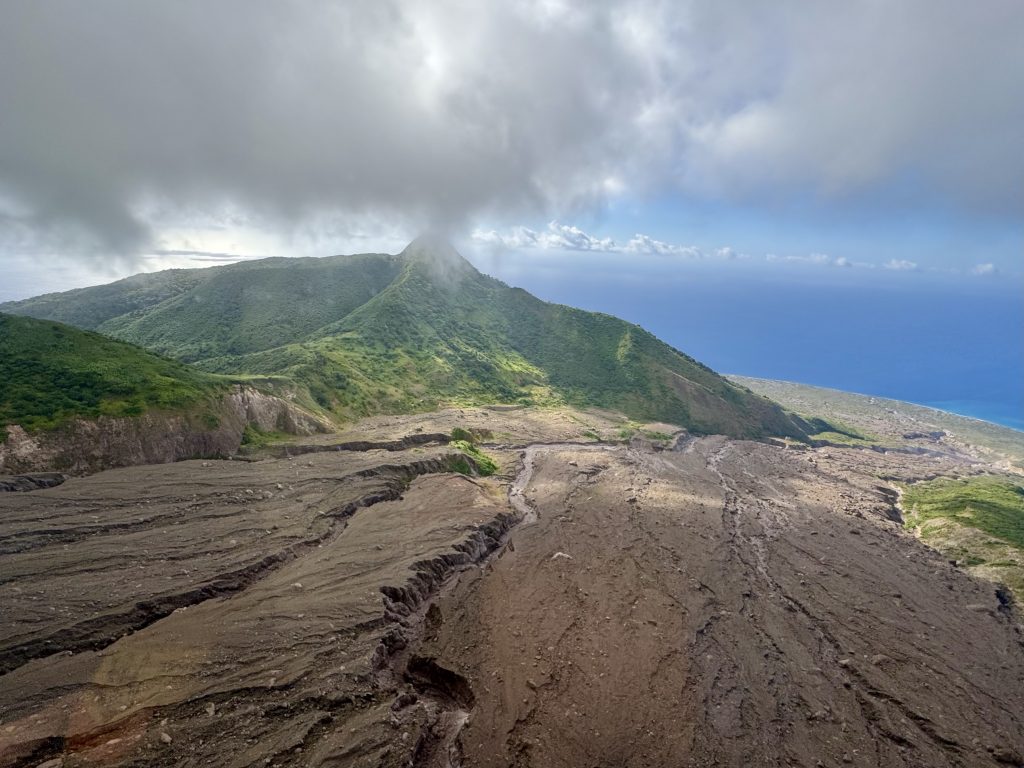
The volcano has a solid dome, with tectonic plates moving around, some 3 miles beneath ground. When the plates cause enough stress, the volcano erupts, emitting ash clouds up to 50,000 feet into the atmosphere. The lava release is essentially a molten rock slide, which can travel at speeds of over 150 miles per hour, so there’s no outrunning an eruption. An exclusion zone was understandably imposed, covering the southern and central sections of the island. There is generally no access into the exclusion zone, except for those closely monitoring the volcanic activty from the Montserrat Volcano Observatory.
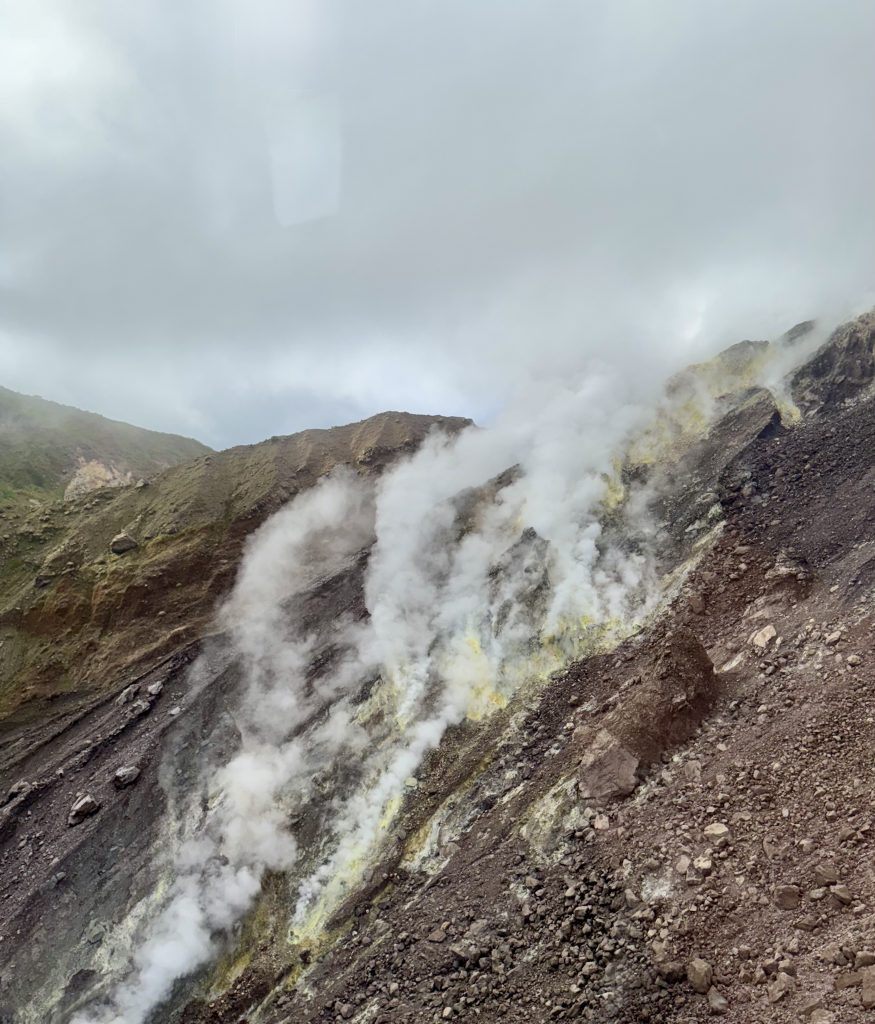
There is constant volcanic activity in the southern section of the island and minor earthquakes are occurring all the time. Active sulphur release valves were evident atop the southern peak and the odour was pretty intense.
In 2015, it was announced that planning would begin on a new town and port at Little Bay on the north-west coast. After a number of delays including Hurricanes Irma and Maria in 2017, and the COVID Pandemic beginning in 2020, the Little Bay Port Development £28 million project began in June 2022 and continues to this day. After a fifteen minute flight around the active volcano, we headed back across the Caribbean Sea towards Saint John.
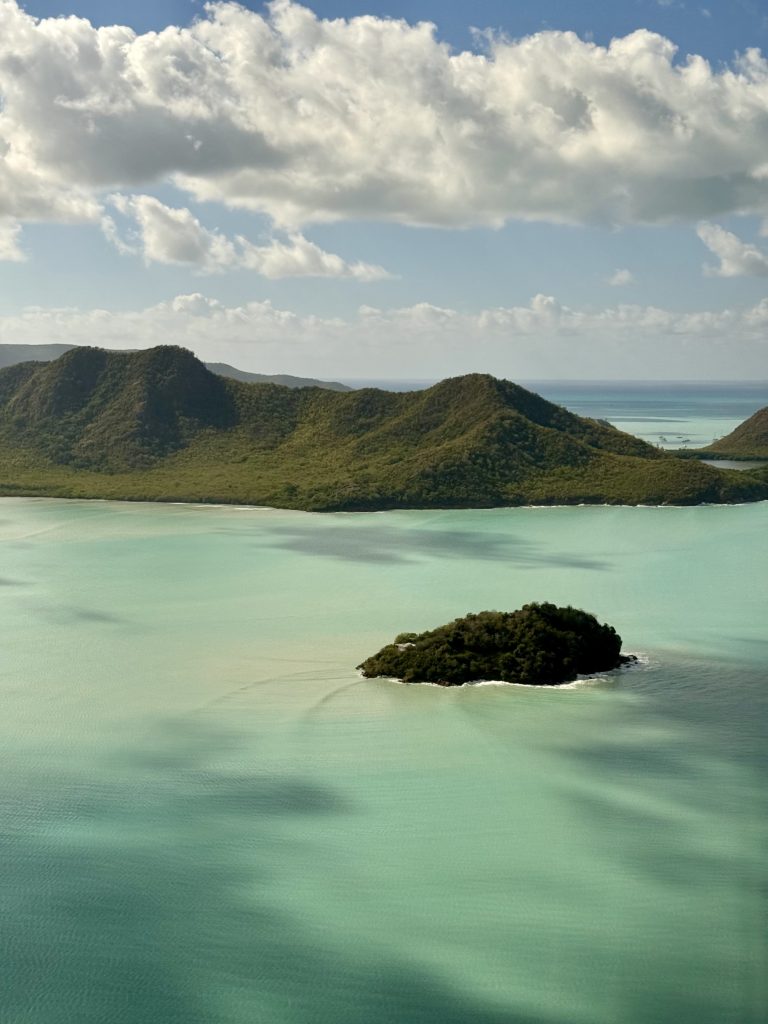
The island views on our return were breathtaking and the 45-minute flight literally flew by.

The welcome sight of the Union flag on the front of Arvia meant we were approaching the landing pad. Our sincere thanks to our pilot Raymond and Calvin Air for such an inspiring morning.
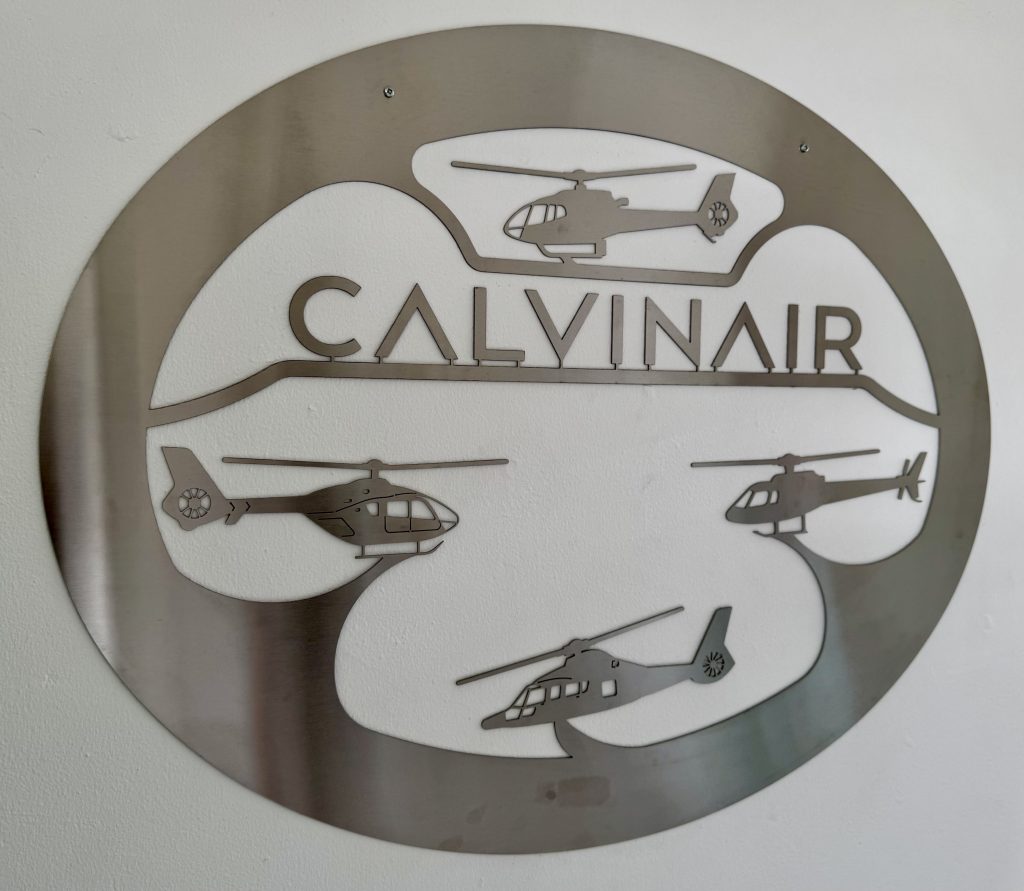
Tomorrow is a day at sea as we cruise south, towards the island of Grenada, another one of our favourites. R&L xxx
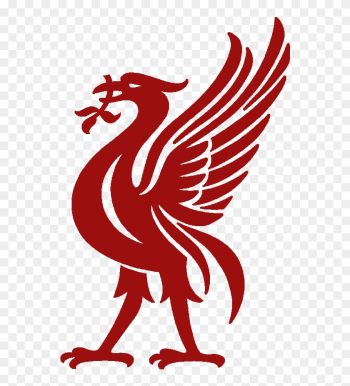
Leave a Reply to Mum and Dad Cancel reply